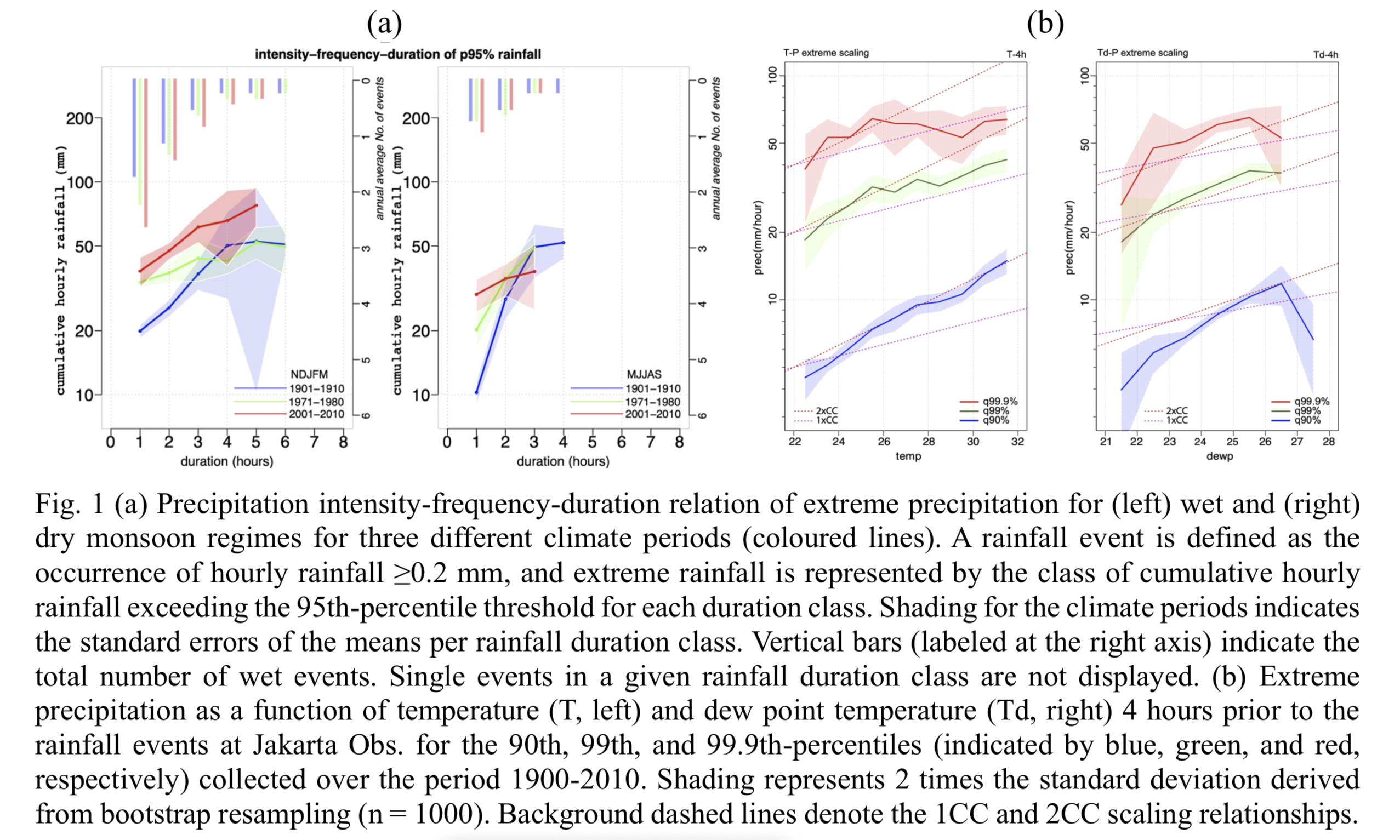Graphical Abstract
Siswanto, G. van der Schrier, and B. van den Hurk, 2022: Observed increase of urban short duration rainfall extremes as surface temperature rise: The Jakarta case. J. Meteor. Soc. Japan, 100, 475-492.
https://doi.org/10.2151/jmsj.2022-023.
Graphical Abstract
Published
Plain Language Summary: Analysis of 81 years hourly rainfall of Jakarta Observatory between 1900 and 2010 indicate about doubling of the number of short-duration rainfall events in the wet season, with higher intensity in recent decades. Surface warming in the urbanized city accompanied by enhanced availability of moisture results in an increase in convective available potential energy, which contributes to enhanced intense precipitation. Super Clausius–Clapeyron scaling (CC) of high- intensity rainfall is attributed to high near-surface temperature and atmospheric moisture content in the morning. This super-CC scaling is present in a relatively small range of surface temperature values. Results of this study are in agreement with earlier findings exploring the intensification of extreme morning precipitation and a temporal shift of the diurnal convective maximum from late afternoon to late night/early morning in response to local warming.
Highlights:
- A significant frequency increase of about 25% in short duration (1–3 hours) rainfall events was observed in 2001–2010 compared to the start of the 20th century, and the cumulative rainfall amount related to these events has increased by 50%. The most intense rainfall events are getting shorter in duration.
- Surface warming in the urbanised city together with additional moisture availability resulting from large-scale atmospheric features in the lower atmosphere may result in warmer and more unstable air aloft, in particular in the mid-troposphere, implying a larger buoyancy into the mid-troposphere and larger and higher convective up- drafts.
- Increased atmospheric moisture in the early morning may promote 2CC temperature scaling triggering strong morning rainfall events, while 1CC temperature scaling is found for less extreme rainfall events.







